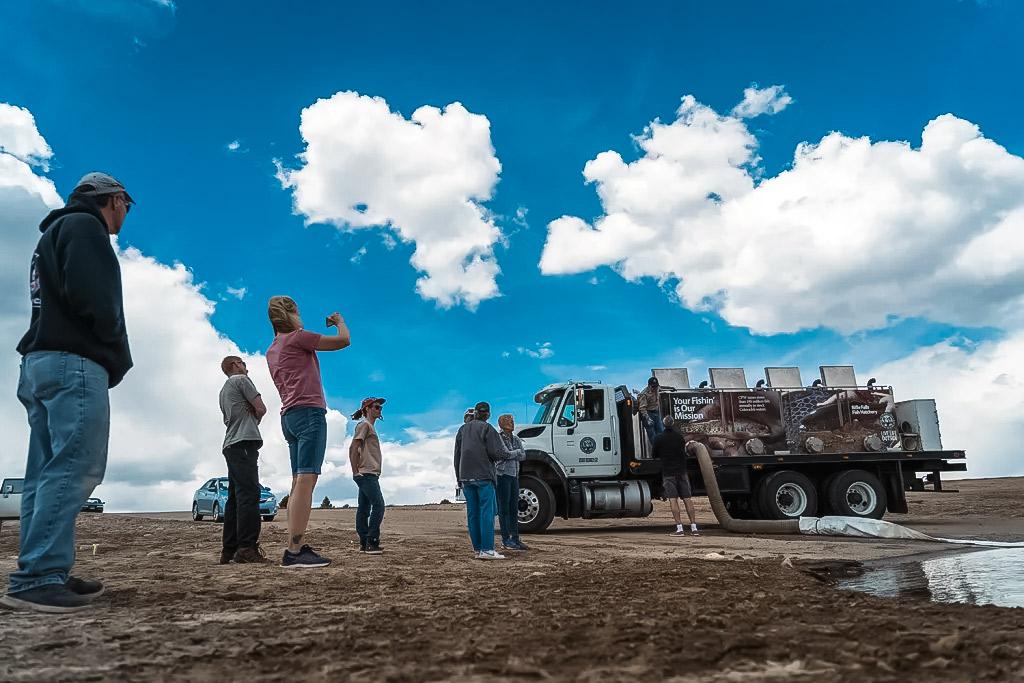
Las Animas Hatchery & Rearing Unit
Facility Type:
Hours:
Daily, 7 a.m. to 3:30 p.m.
Tours:
- Self-guided tours
- Guided tours
Address:
33128 County Rd 5.5
Las Animas, CO 81054
United States
Las Animas Hatchery & Rearing Unit
Facility Type:
Hours:
Daily, 7 a.m. to 3:30 p.m.
Tours:
- Self-guided tours
- Guided tours
Address:
33128 County Rd 5.5
Las Animas, CO 81054
United States
Navigate to:
Las Animas State Fish Hatchery & Rearing Unit
The Las Animas Hatchery is one of the two Parks & Wildlife warm water hatcheries and the first was established in 1937. (The Wray Hatchery is the other; the Pueblo Hatchery is a cold and warm water facility). Brood fish (mature females and males used to produce and fertilize eggs) are produced here—channel catfish and largemouth bass. Catfish and bass are also stocked in eastern Colorado lakes and streams from here.
The Las Animas unit’s facilities consist of 13 ponds totaling 13.25 acres, 250 feet of concrete raceways, three lined raceways, 12 hatchery tanks, and 6 nurse basins. The water supply is from Adobe creek and seepage from Fort Lyon canal. The hatchery is staffed with four full-time employees and two part-time seasonal employees.

A man holding a Largemouth bass.
Largemouth Bass
One of the primary species cultured at the Las Animas Unit is the largemouth bass, which was the first species of fish introduced into Colorado in about 1878. Like all sunfish, they are nest builders, spawning in 18−36 inches of water in late spring when water temperatures reach 65 degrees F.
Las Animas has been responsible for the largemouth bass production requests for the state of Colorado since 1989 and currently produces about 1.2 million largemouth bass fry and fingerlings annually.
Visitors Welcome!
- Self-guided tours
- 'Feed the Fish' fish food dispensers
- Large fish 'show' pond
- Wildlife books and videos
- Free posters and pamphlets

Fingerling catfish being held out of water.
Channel Catfish Broodstock/ Spawning
Channel catfish are cavity spawners, which means they lay their eggs in some type of container. In the wild that could be a hollow log or a rock structure. At the Las Animas Hatchery, we provide them with a PVC container that resembles an old milk can.
Channel catfish usually reach sexual maturity at four years of age. Once they reach maturity they are introduced to the spawning ponds where the males will claim a spawning container and set up housekeeping. He will clean the container and start guarding it against other male rivals. Once a female has decided he will make a suitable mate, she will enter the container and begin laying eggs. When she is done laying eggs and the male has fertilized the eggs, she leaves the male to guard and care for the eggs.
Hatchery personnel will check the spawning containers every four days and remove the eggs. The eggs are taken to the hatchery building where they are placed in hatching jars until hatching is completed. The newly hatched fry are then placed in nurse tanks where they are fed a starter diet before going outdoors to grow-out ponds. When the f ingerlings reach the appropriate size they are stocked to lakes all around the state.

Your Fishin’ Is Our Mission!
Colorado’s Fish Stocking Program
Since 1881, Colorado Parks & Wildlife fish hatcheries have been dedicated to improving the fish populations of our beautiful state. Today, CPW operates 19 hatcheries that breed, hatch, rear and stock over 90 million fish per year. Many of the fish produced are to enhance angling opportunities, while others serve a critical role in native species recovery efforts. Colorado fish hatcheries support our angling pastime, which contributes 2.4 billion dollars annually to our state's economy!


